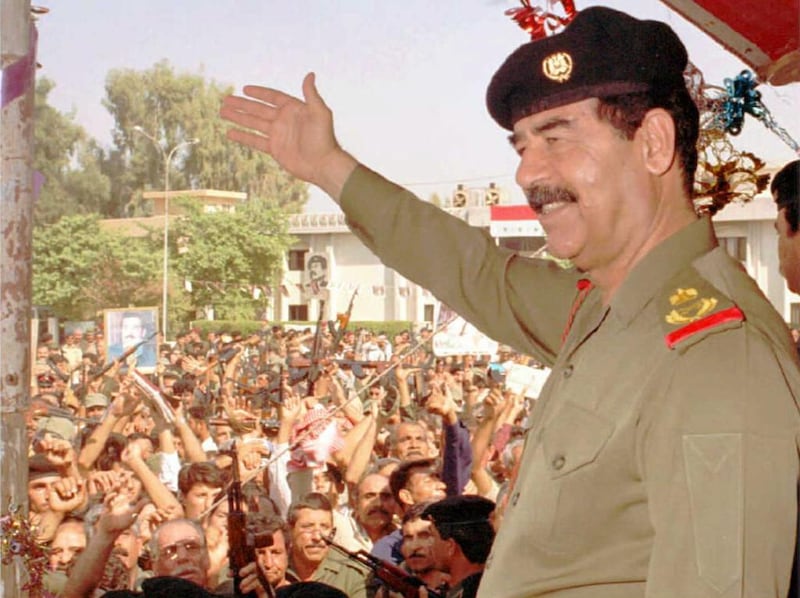In 2002, a 12-metre statue of Saddam Hussein was erected in Baghdad's Firdos Square, right in the middle of one of the Iraqi capital’s many roundabouts. It depicted the Iraqi dictator standing heels together with his right arm outstretched with an open palm. It was a symbol of Saddam’s confidence but also of his ruthless grip on the country.
A year later, Operation Iraqi Freedom was just a few weeks under way when the statue was torn down by US coalition forces as watching Iraqis cheered. That was 15 years ago on April 9. In this episode of Beyond the Headlines, we discuss where Iraq is now with those who remember the statue's symbolic fall.
Rasha Al Aqeedi was in Mosul at the time. Today, she works as a researcher in Al Mesbar Studies and Research Centre in Dubai. She talks about the fall of Saddam as a moment of joy but also as one of great concern for the country.
Mina Al Droubi, a reporter on The National’s foreign desk, was in London when she saw the news in April 2003. Although only 14, she remembers the event as sparking a reaction that still marks the politics of Iraq today.
___________
Beyond the Headlines, produced by Kevin Jeffers, is The National's weekly podcast for analysis and insight from the Middle East. Follow, subscribe and rate us at Apple Podcasts, Audioboom, Pocket Cast or your favourite podcasting app.





